Recent Articles
Popular Makes
Body Types
2018 Jaguar XF Road Test and Review
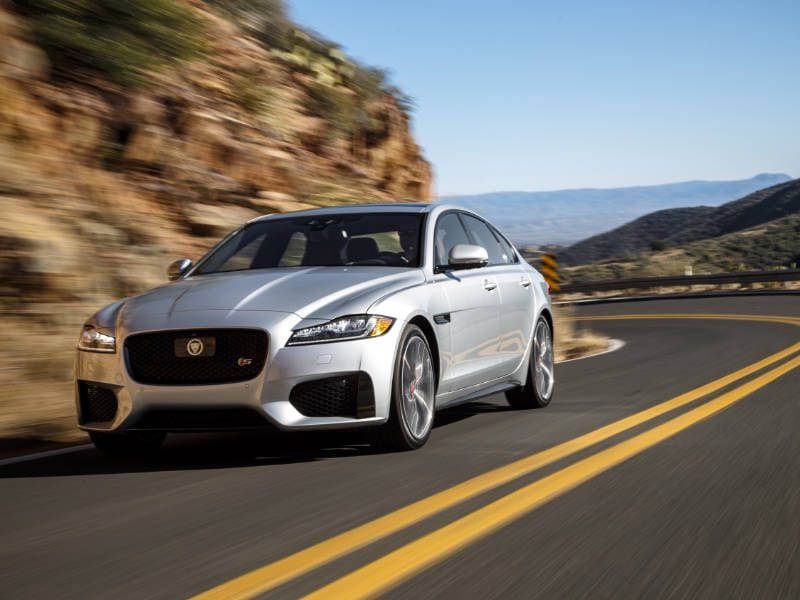
2016 Jaguar XF front corner driving hero ・ Photo by Jaguar
The salacious E-Type sports car, introduced in 1961, is certainly the most important road car in Jaguar’s history. It isn’t even up for discussion. Fifty-seven years later, the E-Type is still considered one of the most beautiful and exciting cars ever made. They will be eternally desirable. The Jaguar XF, however, saved the company.
First unveiled in 2007, the daring XF began a product and design revolution that pulled the British luxury brand out of a 25-year funk. Jaguar was near its last breath when the XF turned heads and changed minds. Its success set the stage for the automaker's current lineup of impressive cars and SUVs, including the sexy F-Type sports car, the spiritual successor to the E-Type.
Now in its second generation, the 2018 Jaguar XF competes in the crowded luxury midsize segment, which includes the Lexus GS, Audi A6, Volvo S90, Cadillac CTS and the rajahs of the class, the BMW 5 Series and the Mercedes-Benz E-Class.
Now There's an XF Wagon
This year Jaguar is offering the XF as a four-door sedan and as a wagon. Jag calls the wagon the XF Sportbrake. The name plays off the term shooting brake, which was developed by the British for vehicles modified to carry shooting parties and their gear. More recently the label has also been attached to high-performance GT coupes like the new Ferrari GTC4Lusso.
The XF Sportbrake has already been available in Europe, but this is the first time it's being imported to America. And the timing is right. After a dry spell, there’s a wagon resurgence taking place in the luxury space. Mercedes has just introduced a redesigned version of its E-Class wagon, Volvo’s new V90 wagon is beautiful and Buick has just announced an all-new Regal wagon called the TourX. Add the XF Sportbrake to that mix and luxury buyers looking to combine sports sedan ride and handling with SUV versatility suddenly have plenty to choose from.
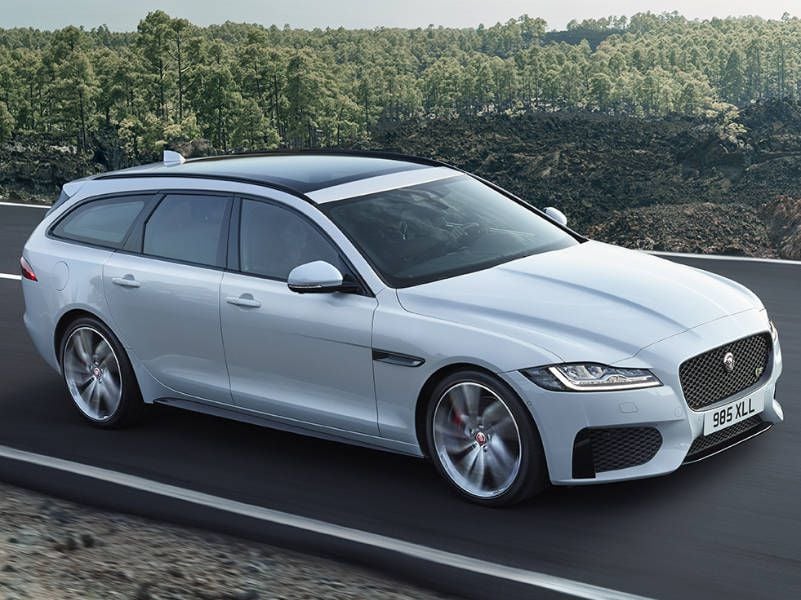
Photo by Jaguar
Six Trim Levels and Pricing
The 2018 Jaguar XF sedan is available in six trim levels — Base, Premium, Prestige, R-Sport, S and Portfolio — and with several different engines. They start with a 247-horsepower turbocharged 2.0-liter four-cylinder and a 2.0-liter turbodiesel that makes 180 hp. Jag also offers a 340-hp supercharged 3.0-liter V6 in the Premium trim and above, while it’s standard in the S model. The top Portfolio trim is powered by a 296-hp version of the turbocharged 2.0-liter four-cylinder. All-wheel drive is available with each engine and in all trim levels. An eight-speed automatic transmission with paddle shifters is standard across the XF lineup. Unfortunately, Jaguar doesn’t offer its supercharged 5.0-liter V8 in the XF. There’s also no hybrid model.
Sedan prices start at $48,770, including a $995 destination/handling charge, for a rear-wheel drive base model with the 2.0-liter gas engine, and top out at $71,420 for a Portfolio with all-wheel drive. Fewer trim levels and engines are available on the XF Sportbrake. Jaguar offers the Sportbrake S and First Edition. Both get the supercharged V6 and all-wheel drive standard. Prices start at $71,445.
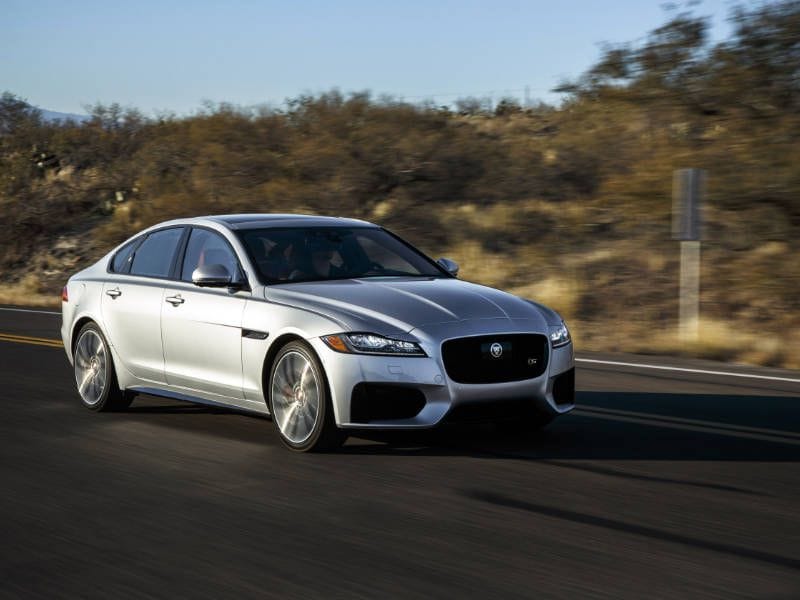
Photo by Jaguar
Quick and Comfortable
Drivers who want the most aggressively styled and tuned XF should go for the XF S, like our test vehicle. Jaguar says the XF S rockets to 60 mph in just 5.1 seconds, which is certainly brag-worthy at the Elks Lodge Fish Fry, but it feels even quicker because of the linear power delivery of its supercharged V6. The first time I punched the throttle I figured Jag had made a mistake and installed its supercharged V8. Only the V6’s exhaust note above 6,000 rpm gave it away.
The XF S comes with standard 20-inch wheels and tires, which can crash over large road imperfections, but overall the ride is firm but comfortable. Our test car felt sporty around town and its handling limits, thanks to those large tires and all-wheel drive, are well beyond the needs of most buyers. Steering feel is good, but some may find the effort to be a bit heavy. JaguarDrive Control allows you to tune the car for conditions, and sport-lovers will likely pick Dynamic Mode. It features increased throttle response, tighter steering, and more aggressive shifting and gear-holding from the transmission.
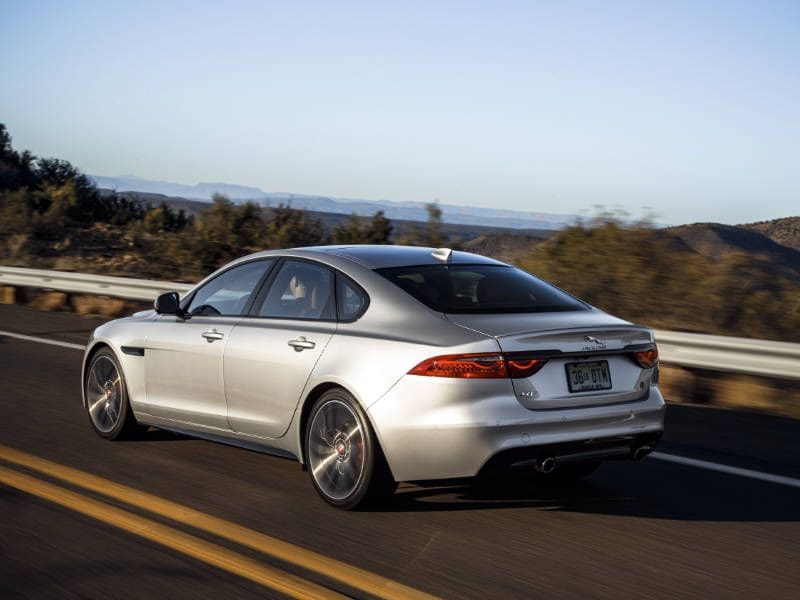
Photo by Jaguar
Shapely and Sexy
From the tumultuous 1960s until leg warmers finally faded out with the 1980s, Jaguar sedans were considered achingly beautiful. The shape was so beloved that Jag refused to update the design — and when time marched on, as it always does, the cars became dated. That began to change with the first-generation XF a decade ago. Today's Jags are taut, curvaceous and sexy, just as they were in the swinging sixties, only this time they pack the aggressive proportions and hard edges dictated by modern design language.
Although there’s a strong family resemblance between the new XF sedan and the smaller and less expensive XE, the XF packs more musculature into its shape. Further, its low-slung fastback roofline and broad shoulders give it a wide, hunkered-down look. The black grille and trim on our XF S test vehicle also added plenty of attitude, as did its oversized dual exhaust pipes and red brake calipers.
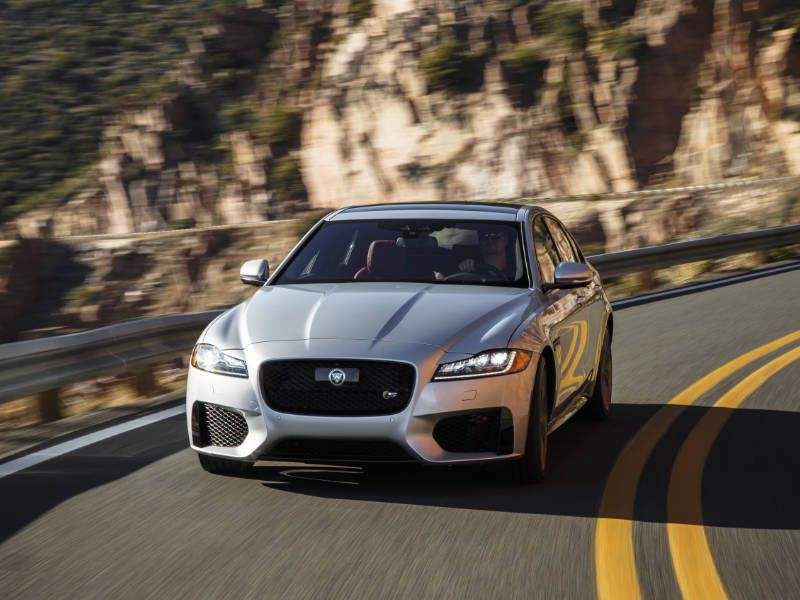
Photo by Jaguar
High-Quality Interior
With beautiful materials, dynamic design and high-quality fit and finish, the interior of the 2018 Jaguar XF looks and feels expensive. It’s also comfortable, quiet on the highway and well laid out. But it’s not the best interior in its class. That honor goes to the Mercedes E-Class, which is so modern, so intricate in its detailing, that it’s in another league.
Visibility is excellent, and I also appreciated the XF’s extra-large sunroof, its big 10.2-inch touchscreen and its onboard WiFi. I’ve also become a fan of the Jaguar’s rotary shifter, which rises dramatically from the console when you start the engine. The XF's infotainment system is vastly improved, but it can still feel slow and a bit complex compared to others in the class. Also, its voice recognition didn’t get along with my New Jersey accent — a surprise since Jaguar’s U.S. headquarters are in the Garden State.
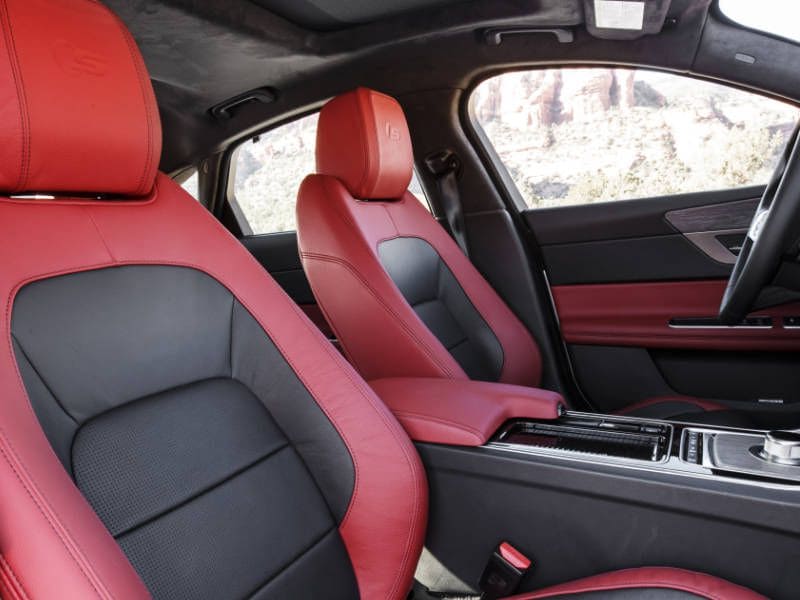
Photo by Jaguar
Family-Friendly and Fuel-Efficient
The 2018 Jaguar XF seats five comfortably. Although some of its competitors offer more rear-seat space, the XF has plenty. Rear passengers can enjoy the rear air conditioning vents and controls as well as the rear sunshades, though my teenage daughters thought the lack of heated rear seats was an unfortunate oversight. Younger families will appreciate the Jag’s easy-to-reach LATCH connectors in the outboard seats and three easily accessed upper tether anchors. The XF Sportbrake offers the same rear seat space and features as the sedan.
For its class, the XF is also quite fuel-efficient — especially the diesel, which is rated for 31 mpg in the city and 42 mpg on the highway. The base turbocharged four-cylinder gas engine is rated 25 mpg city and 34 mpg highway, while the 340 hp V6 is rated 20 mpg city and 29 mpg highway. I averaged 22 mpg in a week of spirited mixed driving around Los Angeles.
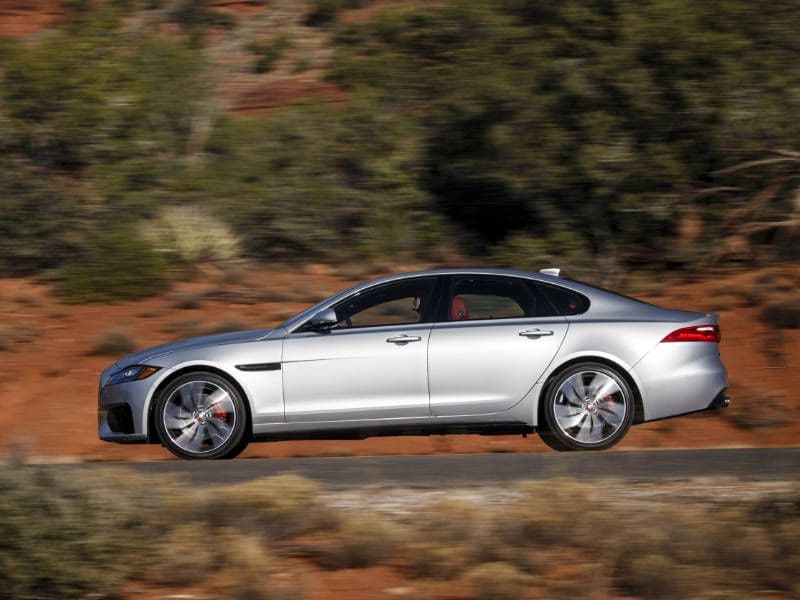
Photo by Jaguar
Big Cargo Space
With 19.1 cubic feet of cargo space, the 2018 XF sedan has the largest trunk in its class. The trunks in the Lexus GS, Audi A6, Volvo S90 and Mercedes E-Class are significantly smaller. To expand the space, the Jag comes with a 40/20/40 split folding rear seat. Our test car, however, lacked a power trunklid, which seems like an inappropriate omission at this price point.
No surprise, the XF wagon offers even more cargo space. Behind the rear seat is a sizable 31.7 cubic feet. Fold the backseat and you’ll find 69.7 cubic feet. That’s far more than you’ll find in a Mercedes E-Class wagon and the Volvo V90. Jaguar’s own F-Pace SUV offers more, but not much more. You’ll find 33.5 cubic feet behind the F-Pace rear seat, but only 63.5 with its rear seat folded. Also, the XF Sportbrake comes with a standard gesture-activated power opening and closing tailgate, which can be opened or closed with the wave of your foot under either rear corner of the car.
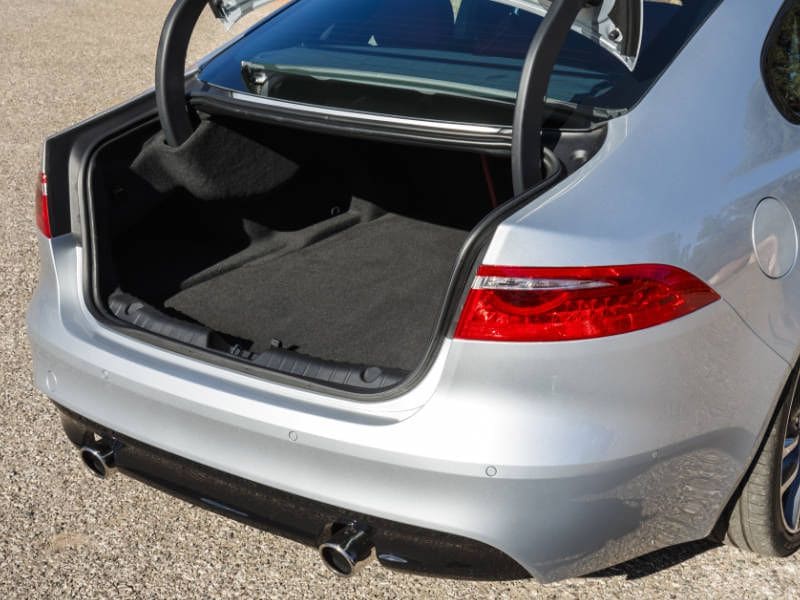
Photo by Jaguar
Advanced Safety Systems and Technology
A cool feature available on the XF Sportbrake is the Activity Key, a waterproof wristband that acts as the car key. It’s perfect for surfers, bikers and other active owners because it gives you access to the car while allowing you to lock the primary key in the car where it won’t get lost or wet.
Jaguar also offers many valuable active safety systems, including a head-up display, an emergency braking system, blind-spot monitoring and assist, and a rear cross-traffic alert system. Adaptive cruise control and lane keep assist are also available. Also offered are Advanced Parking Aids, which will basically parallel park the XF for you, along with sensors that warn of impending parking-speed collisions.
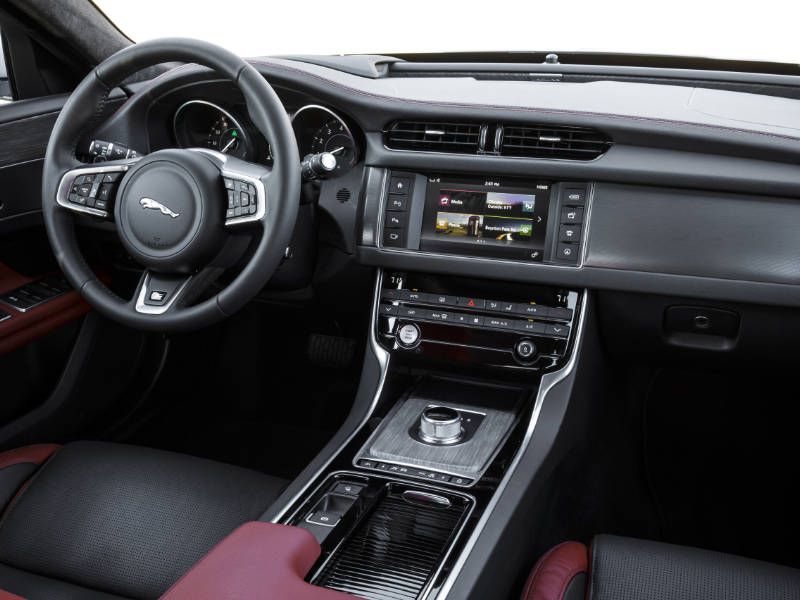
Photo by Jaguar
Final Thoughts
If you’re looking for a performance luxury sedan or wagon, the 2018 Jaguar XF is a desirable overall choice. It performs well, it’s comfortable and it’s fun to drive, especially with the supercharged V6, which Jaguar also uses in its F-Type sports car.
Although its interior is not to up the cabin of the Mercedes E-Class, this Jaguar is beautifully appointed and its cargo space is class-leading. The XF Sportbrake is also one of the few wagons available in the luxury midsize segment. A long list of available safety technology only adds to the XF's compelling combination of luxury, performance and style.
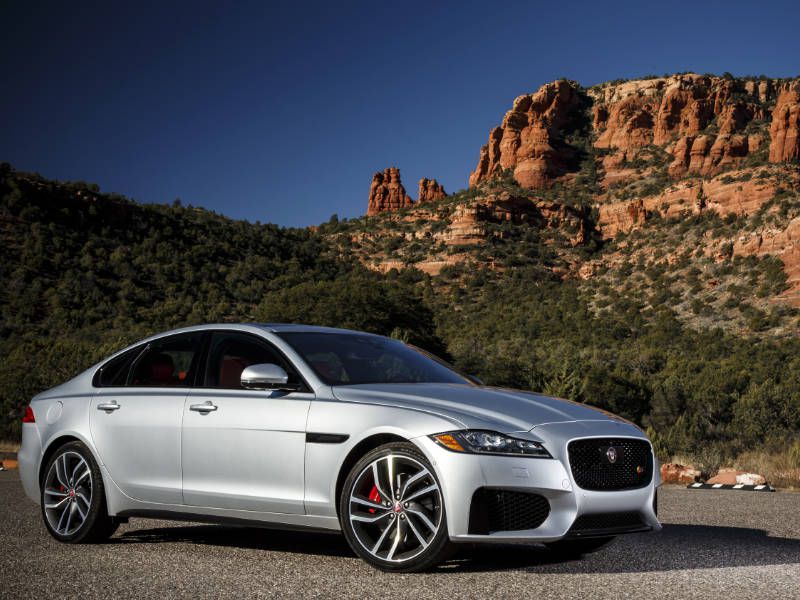
Photo by Jaguar